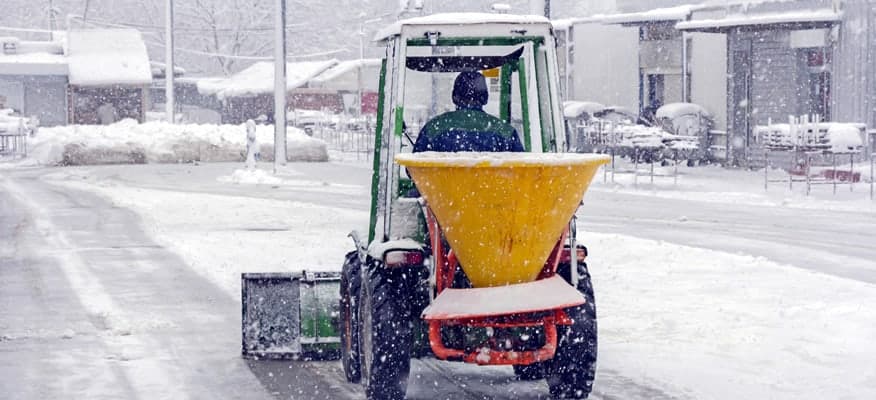It is hard to think of winter in the Northeast without thinking of our friends: snow, ice, salt. Snow falls on a regular basis. Ice comes from ice storms or from melting snow. Salt follows the other two to keep us safe. The frustration for some people is, with other alternatives, why is spreading rock salt still the primary method for attacking snow and ice. We are glad you asked.
Rock Salt is “Dirt Cheap”
At about $50/ton for bulk rock salt for deicing, it is hard to come close to the cost of rock salt when it comes to fighting ice and snow. Some other products costs more than 10 times as much to produce compared to what it costs to mine and prepare rock salt for spreading. Don’t get us wrong, many contractors would be happy to spread the more environmentally friendly products, but their customers want the cheaper product. So in the end, it is the clients that say price is an important factor in which deicing product is chosen.
Brine Doesn’t “Cut-It”
Brine is great as a pre-treatment or on ice, but when you are dealing with a lot of snow, brine solutions and even some of the dry rock salt alternatives don’t seem to cut through the snow like a good spread of rock salt. When you have to load your salt spreader with one ingredient to work in the changing situations of a large winter weather event, rock salt continues to be a great, versatile product.
What About Rock Salt’s Bad Reputation?
Rock Salt gets a bad reputation not because it is evil, but usually because it is over-applied. Contractors that learn to apply the proper amount of salt save money, the environment, roadways, and the properties of clients when they use just the right amount of salt instead of going with the “more is better” theory. Rock Salt can be combined with other products to be less corrosive and to work in lower temperatures than it does when applied with no treatments. Leveraging the strengths of rock salt while adding the strengths of other products creates a real benefit where everyone can win.
SIMA has been doing a lot in the industry in order to help contractors know the best spreading methods to minimize use of deicing products, but also to explore how we can do even better in reducing any negative effects of rock salt. You can learn more about SIMA’s sustainable salt initiative here!

